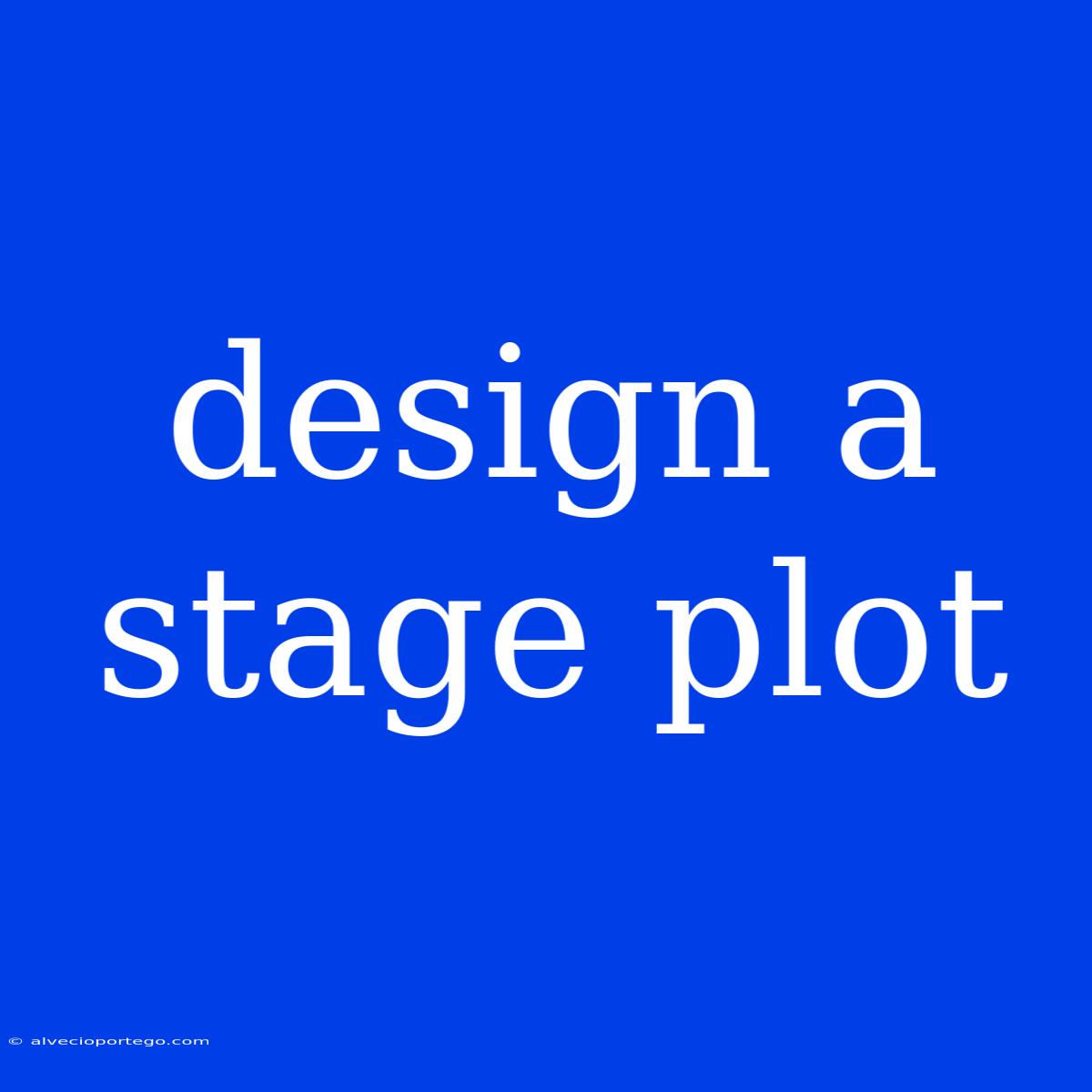Designing a Stage Plot: Your Blueprint for a Successful Show
A stage plot is the foundation of any successful theatrical production. It's the visual roadmap for how everything on stage, from scenery to lighting and sound equipment, will be arranged. A well-designed stage plot ensures that your show runs smoothly, looks spectacular, and ultimately delivers a memorable experience for the audience.
Here's a breakdown of what a stage plot is, why it's essential, and how to create one:
What is a Stage Plot?
A stage plot is a detailed, scaled drawing of the stage and its surroundings. It shows the layout of all the elements involved in your production, including:
- Scenery: The set pieces, furniture, props, and any other physical elements on stage.
- Lighting: The placement of lighting instruments and their specific functions (e.g., front light, back light).
- Sound: The location of speakers, microphones, and other audio equipment.
- Video: The placement of screens, projectors, and other video components.
- Special Effects: The placement and specifications for fog machines, pyrotechnics, or other special effects.
- Technical Crew Positions: Where the technical crew will be located, ensuring clear sightlines and efficient movement.
Why is a Stage Plot Crucial?
A stage plot is essential for several reasons:
- Communication: It serves as a clear and concise communication tool between the director, technical crew, and everyone involved in the production.
- Planning: It allows for detailed pre-production planning, ensuring all the elements work together seamlessly.
- Efficiency: It streamlines the set-up and strike process, saving time and minimizing errors.
- Safety: It helps to ensure the safety of performers and technicians by identifying potential hazards and conflicts.
How to Design a Stage Plot
Here are the steps to creating a successful stage plot:
1. Gathering Information:
- Script: Thoroughly analyze the script, identifying the key locations, transitions, and technical elements.
- Stage Dimensions: Determine the exact size and shape of the performance space.
- Budget: Consider your budget limitations and choose appropriate materials and equipment.
- Technical Resources: Assess the availability of lighting, sound, video, and special effects equipment.
2. Sketching the Layout:
- Start with the Stage: Draw a clear representation of the stage, including the stage opening, proscenium arch, and any other stage features.
- Add Scenery: Sketch the placement of set pieces, props, and furniture, making sure there's enough space for movement and transitions.
- Consider Sightlines: Ensure that all audience members will have clear views of the actors and important action.
3. Adding Technical Elements:
- Lighting: Include the placement of lighting instruments, their type (e.g., spotlight, wash), and their color.
- Sound: Mark the positions of speakers, microphones, and any special effects equipment.
- Video: Indicate where screens, projectors, and cameras will be located.
4. Labeling and Annotating:
- Clear Labels: Use clear and concise labels for all elements on the stage plot.
- Annotations: Add notes about specific dimensions, materials, or equipment requirements for each element.
5. Refining and Finalizing:
- Review and Feedback: Share the draft with the director, technical crew, and other stakeholders to gather feedback and refine the plot.
- Final Version: Create a final, clean version of the stage plot for distribution and use during the production.
Essential Tools and Resources:
- CAD Software: Programs like AutoCAD, Vectorworks, or SketchUp can help create professional-looking stage plots.
- Online Drawing Tools: Websites like Draw.io or Google Drawings offer free, easy-to-use options.
- Stage Plot Templates: Many websites offer free, downloadable templates to get you started.
Remember: A well-designed stage plot is a powerful tool that can make your production run smoothly and efficiently. Take the time to create a detailed and accurate plot, and you'll be rewarded with a memorable and successful show!

